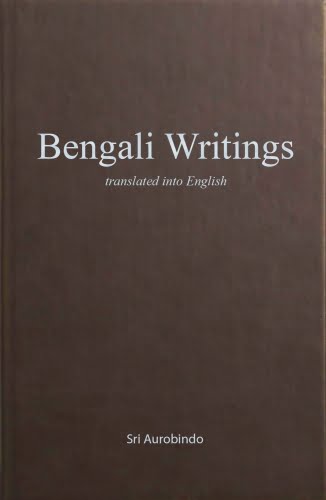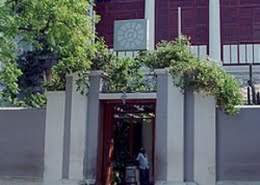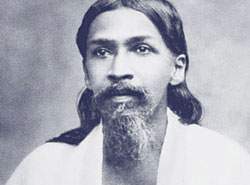Bengali Writings by Sri Aurobindo (translated into English)

Bengali Writings
Most of the pieces in Bengali were written by Sri Aurobindo in 1909 and 1910 for Dharma, a Calcutta weekly he edited at that time; the material consists chiefly of brief political, social and cultural works. His reminiscences of detention in Alipore Jail for one year (“Tales of Prison Life”) are also included. There is also some correspondence with Bengali disciples living in his ashram.
Book Details
Author: Sri Aurobindo
Print Length: 448 pages
Publisher: Sri Aurobindo Ashram
Book format: PDF, ePub, Kindle
Language: English
Book Download
Contents
I. Hymns
- Hymn to Durga (Dharma, No. 9, October, 1909)
- Hymn to Dawn (Archives, April 1977)
II. Stories
- A Dream (Suprabhat, 1909-1910)
- The Ideal of Forgiveness (Dharma, No. 26, February, 1910)
III. THE VEDA
- The Secret of the Veda (Vividha Rachana, 1955)
- Agni — The Divine Energy (Vividha Rachana, 1955)
- The Rigveda (Vividha Rachana, 1955)
IV. THE UPANISHADS
- The Upanishads (Dharma, No. 15, December, 1909)
- The Integral Yoga in the Upanishads (Vividha Rachana, 1955)
- The Isha Upanishad (Vividha Rachana, 1955)
V. THE PURANAS
- The Puranas (Dharma, No. 17, December, 1909)
VI. THE GITA
- The Dharma of the Gita (Dharma, No. 2, August, 1909)
- Asceticism and Renunciation (Dharma, No. 3, September, 1909)
- The Vision of the World Spirit (Dharma, No. 23, February, 1910)
- The Gita: An Introduction (Dharma, Nos. 7-9, 1909-1910)
- The Gita: Text — Translation (Dharma, No. 10, 1909)
- Sanjaya’s Gift of Divine Vision (Dharma, Nos. 11-18, 1909-1910)
- The Gita: Text — Translation (2) Chapter Two (Dharma, Nos. 19-24, 1910)
VII. DHARMA
- The Chariot of Jagannath (Prabartak, 1918)
- Three Stages of Human Society (Vividha Rachana, 1955)
- Ahankara (Dharma, No. 5, September, 1909)
- Integrality (Vividha Rachana, 1955)
- Hymns and Prayers (Dharma, No. 24, February, 1910)
- Our Religion (Dharma, No. 1, August, 1909)
- Maya (Dharma, No. 3, August, 1909)
- Nivritti (Dharma, No. 12, November, 1909)
- Prakamya (Dharma, Nos, 17 and 18, 1909-1910)
VIII. NATIONALISM
- The Old and The New (Vividha Rachana, 1955)
- The Problem of the Past (Dharma, No. 6, September, 1909)
- The Country and Nationalism (Dharma, No. 14, December, 1909)
- The True Meaning of Freedom (Dharma, No. 8, October, 1909)
- A Word About Society (Vividha Rachana, 1955)
- Fraternity (Dharma, No. 23, February, 1910)
- Indian Painting (Dharma, No. 25, February, 1910)
- Hirobumi Ito (Dharma, No. 10, November, 1909)
- Guru Govind Singh (Dharma, No. 8, October, 1909)
- National Resurgence (Dharma, No. 5, September, 1909)
- Our Hope (Dharma, No. 20, January, 1910)
- East and West (Dharma, No. 22, January, 1910)
IX. Tales of Prison Life
- Tales of Prison Life (Suprabhat, 1909-1910)
- Prison and Freedom (Bharati)
- The Aryan Ideal and the Three Gunas (Suprabhat, 1909-1910)
- New Birth (Dharma, No, 2, August, 1909)
X. LETTERS
- Letters to Mrinalini (1905-1907)
- A Letter to Barin (1920)
- Letters to N. and S. (Published, 1951 & 1959)
- Obstacles and Difficulties
- Parts of the being
- Foundations of Yoga
- Experience, Direct Perception and Realisation
- Dependence on the Mother
- Inner Vision — Symbols — Colours
- Devotion — Faith — Reliance
- The Psychic Being
- Pride — Impurity — Grief — Despair
- Planes of Consciousness
XI. POETRY
- The Mother Awakes (Archives, April 1980)
- Living Matter (Archives, December 1979)
- The Music of Silence (Archives, April 1978)
- Ravana Vanquished (Archives, April 1979)
- A Colloquy (Archives, December 1980)
- A Poetic Fragment (Archives, April 1981)
Book Sample
Bengali Writings
The Chariot of Jagannath
The ideal society is the vehicle of the indwelling Godhead of a human aggregate, the chariot for the journey of Jagannath. Unity, Freedom, Knowledge and Power constitute the four wheels of this chariot.
The society, created by human intellect or by the play of the impure life-impulses of Nature, belongs to a different order: here it is not the chariot of God who directs the destiny of the collectivity, but a masquerading deity who deforms the divine intuition by covering up the God within; it is rather the vehicle of the collective ego. It wanders aimlessly along the path heaped with numerous pleasures, pulled by the immature and incomplete resolutions of the intellect, and the old and new dull urges of the lower nature. As long as ego is the master, it is not possible to find the goal — even when the goal is seen it is not possible to drive the chariot straight in that direction. The truth that the ego is an obstacle to the divine fulness applies not only to the individual but holds equally good in the case of the collectivity.
Three main divisions of the ordinary human society are noticeable. The first is the well-built chariot, polished, shining, clean and comfortable, fashioned by skilled artisans; drawn by strong well-trained horses, it goes forward cautiously at an easy pace without any haste along a good road. The Sattwic ego is its owner-passenger. This chariot goes round the temple of God situated on a high region above it. Unable to go very close to the high ground, it circles it at a distance. If any one wants to go up, the rule is to get down from the chariot and climb on foot. The ancient Aryan society which came after the Vedic age can be called a chariot of this type.
The second is the motor-car of the luxury-loving efficient worker. It rushes forward restless and tireless, at a breakneckspeed, roaring through the storm of dust and shattering the street beneath it. Ears are deafened by the noise of its horn; it relentlessly pursues its way knocking down and crushing anybody that happens to be in its path. Danger to the life of the passengers is great; accidents are frequent; the car is often smashed and repaired with difficulty, yet proudly it continues. There is no fixed goal but whenever a new vista is seen not too far away, immediately the owner of the car, the rajasic ego, drives in that direction shouting, ‘This is the goal, this is the goal.’ One derives much pleasure and enjoyment in riding this car; yet peril is unavoidable, and to reach the Divine impossible. Modern society of the West is a car of this nature.
The third is the dirty, old, dilapidated bullock cart, slow as a tortoise, drawn by emaciated, starving and half-dead bullocks, and going on the narrow country roads; inside the car is sitting a lazy, blind, pot-bellied, decrepit man in shabby clothes; smoking with great pleasure his mud-stained hukkah and listening to the harsh creaking of the cart, he is lost in the profusion of the lazy and distorted memories of bygone days.
…



